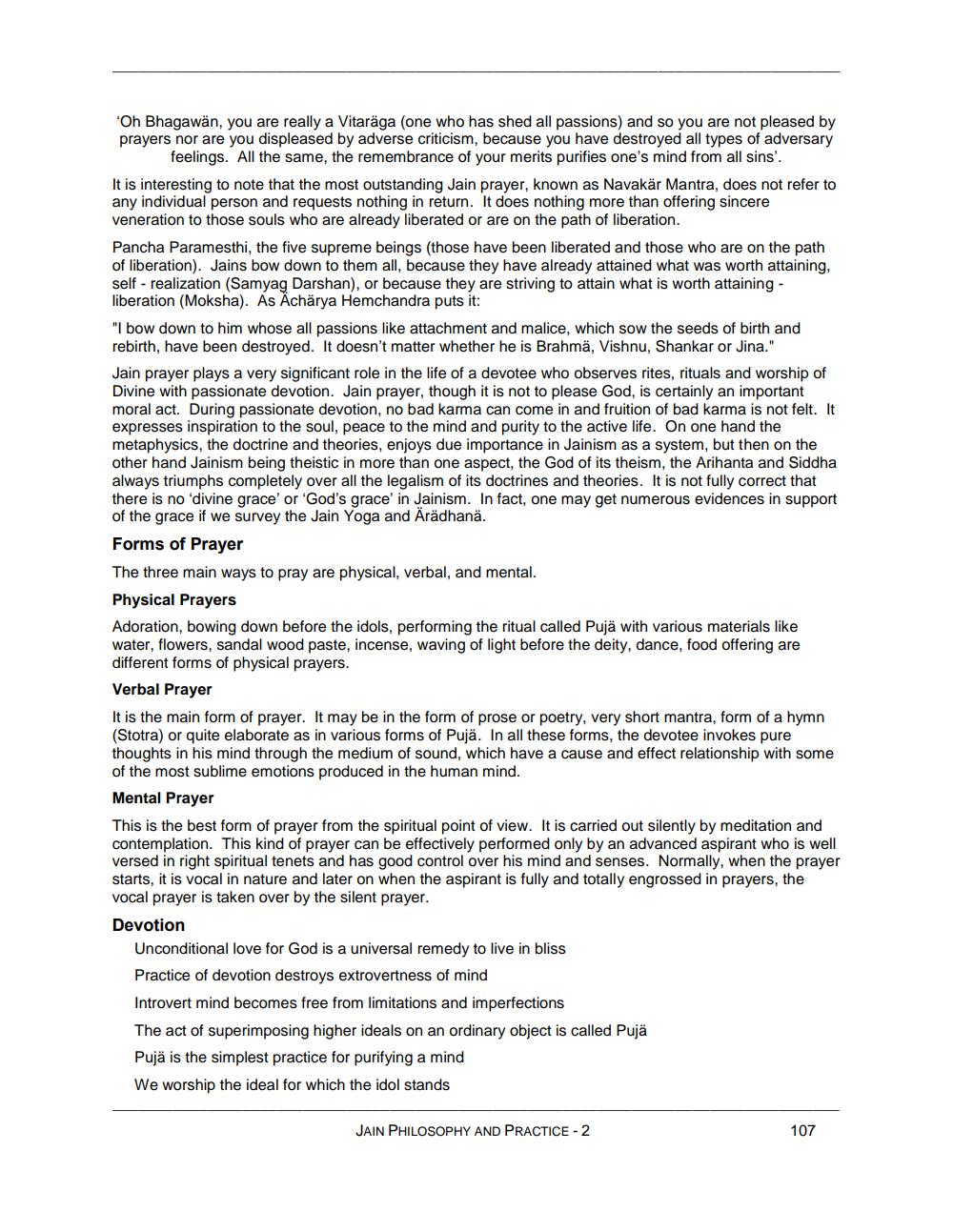________________
"Oh Bhagawän, you are really a Vitaraga (one who has shed all passions) and so you are not pleased by prayers nor are you displeased by adverse criticism, because you have destroyed all types of adversary
feelings. All the same, the remembrance of your merits purifies one's mind from all sins'. It is interesting to note that the most outstanding Jain prayer, known as Navakär Mantra, does not refer to any individual person and requests nothing in return. It does nothing more than offering sincere veneration to those souls who are already liberated or are on the path of liberation. Pancha Paramesthi, the five supreme beings (those have been liberated and those who are on the path of liberation). Jains bow down to them all, because they have already attained what was worth attaining, self - realization (Samyag Darshan), or because they are striving to attain what is worth attaining - liberation (Moksha). As Achärya Hemchandra puts it: "I bow down to him whose all passions like attachment and malice, which sow the seeds of birth and rebirth, have been destroyed. It doesn't matter whether he is Brahmä, Vishnu, Shankar or Jina." Jain prayer plays a very significant role in the life of a devotee who observes rites, rituals and worship of Divine with passionate devotion. Jain prayer, though it is not to please God, is certainly an important moral act. During passionate devotion, no bad karma can come in and fruition of bad karma is not felt. It expresses inspiration to the soul, peace to the mind and purity to the active life. On one hand the metaphysics, the doctrine and theories, enjoys due importance in Jainism as a system, but then on the other hand Jainism being theistic in more than one aspect, the God of its theism, the Arihanta and Siddha always triumphs completely over all the legalism of its doctrines and theories. It is not fully correct that there is no 'divine grace' or 'God's grace' in Jainism. In fact, one may get numerous evidences in support of the grace if we survey the Jain Yoga and Aradhana. Forms of Prayer The three main ways to pray are physical, verbal, and mental. Physical Prayers Adoration, bowing down before the idols, performing the ritual called Puja with various materials like water, flowers, sandal wood paste, incense, waving of light before the deity, dance, food offering are different forms of physical prayers. Verbal Prayer It is the main form of prayer. It may be in the form of prose or poetry, very short mantra, form of a hymn (Stotra) or quite elaborate as in various forms of Pujä. In all these forms, the devotee invokes pure thoughts in his mind through the medium of sound, which have a cause and effect relationship with some of the most sublime emotions produced in the human mind. Mental Prayer This is the best form of prayer from the spiritual point of view. It is carried out silently by meditation and contemplation. This kind of prayer can be effectively performed only by an advanced aspirant who is well versed in right spiritual tenets and has good control over his mind and senses. Normally, when the prayer starts, it is vocal in nature and later on when the aspirant is fully and totally engrossed in prayers, the vocal prayer is taken over by the silent prayer. Devotion
Unconditional love for God is a universal remedy to live in bliss Practice of devotion destroys extrovertness of mind Introvert mind becomes free from limitations and imperfections The act of superimposing higher ideals on an ordinary object is called Pujä Puja is the simplest practice for purifying a mind We worship the ideal for which the idol stands
JAIN PHILOSOPHY AND PRACTICE - 2
107




